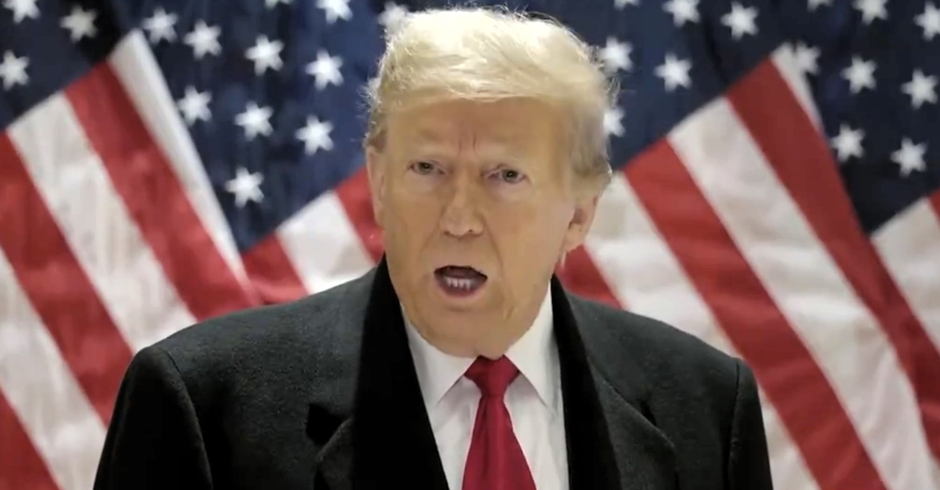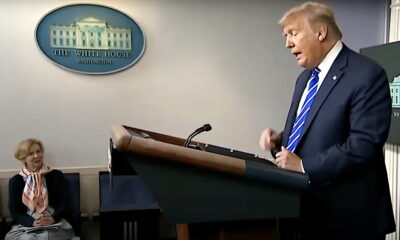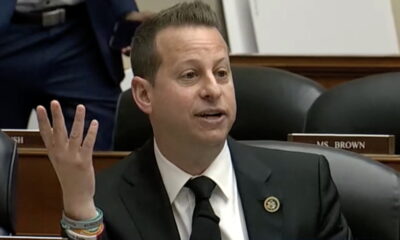The Freedom Riders, The U.S. Army, And Me
Fifty years ago this past weekend, the Freedom Riders of the Student Non-Violent Coordinating Committee (SNCC), which included student leaders Diane Nash and John Lewis, decided — along with many other similarly committed young people — that it was time to integrate bus stations in the Southern United States that were hubs of racist segregation.
Monday night, PBS broadcast a historical documentary that chronicled the strategy and decision-making by the leadership of the civil rights movement for racial equality that strategically applied the practices of Mohatma Gandhi’s nonviolent civil disobedience, to the arduous effort to desegregate and eliminate the “Jim Crow” practices of the Southern United States. As the documentary reflected, the young people who chose to ride the buses of freedom that fateful month of May 1961 changed America forever.
 SNCC’s decision’s was predicated upon the radical notion that it was time to test the authority of a 1961 Supreme Court decision in Boynton v. Virginia, that overturned segregation of bus stations, their restaurants and restrooms, which had become glaring Jim Crow symbols of racial segregation throughout the South.
SNCC’s decision’s was predicated upon the radical notion that it was time to test the authority of a 1961 Supreme Court decision in Boynton v. Virginia, that overturned segregation of bus stations, their restaurants and restrooms, which had become glaring Jim Crow symbols of racial segregation throughout the South.
The first bus of Freedom Riders that arrived in Anniston, Alabama on May 14, –Mother’s Day that year — was immediately set upon by an organized assailants wielding chains and pipes, and having driven the occupants to the back of the bus, in a split moment of time, fire bombed the bus, burning most of the exterior, exposing its naked and jagged frame.
“Meanwhile, the Trailways bus arrived in Anniston, Alabama where the driver would not continue until the group sat segregated,” SNCC’s historical records show. “A violent group boarded the bus and beat the African-Americans sitting in the front, causing several injuries until the group was forced to the back of the bus. A mob carrying iron pipes greeted them on arrival in Birmingham, Alabama. Many were battered, knocked unconscious and hospitalized. The group gathered the next day and prepared to head on to Montgomery, but no bus would take them. A mob gathered as they waited in the white waiting room, and finally the group decided to fly back to New Orleans, ending the first ride.”
Although I was only six-years-old when the Anniston bus burning occurred, by the time I was a teenager, I had come to understand its historical importance as a weigh station on America’s long journey toward achieving racial equality and dignity.
Anniston had become notorious for its violent acts of brazen racism and was an embarrassment on a world stage for the Kennedy Administration, who was planning the young president’s first international trip to meet with European heads of state. Indeed, Anniston’s bus burning and vicious attack on unarmed Freedom Riders would bear the heavy burden of ugly racism for many decades to come.
Â
The card read something like, “You are not welcome in this establishment.†Of course, it did not say, “You are not welcome in this establishment because you are black,†or because I was associating with a black person, but we knew and understood its ugly message instantly.
Â
Not only would Anniston’s bus burning serve as a barometric measure in my life for one of the ugliest incidents of racism in American history, but it would also become my unexpected home on two different occasions during my 15-year Army career.
The first time I enlisted in the U.S. Army in 1974, I was sent to Ft. McClellan, Alabama for the Women’s Army Corps boot camp (I also had my first kiss there with a woman in the laundry room of Charlie Company, 2nd WAC Battalion.) I returned to Anniston in 1986 as a U.S. Army Second Lieutenant to attend officer’s basic course and served four more years at Ft. McClellan, before posting to Hawaii, where I served as a company commander.
During this assignment in Alabama, I bought a house in Anniston which exposed me to homegrown racial prejudice. The most memorably painful incident occurred during a lunch I was sharing with an Army colleague, an African-American woman, who was also a Second Lieutenant. While eating, a white man walked past us and laid a card on the table’s edge and immediately left the restaurant’s premises after his banal act. The card read something like, “You are not welcome in this establishment.”
Of course, it did not say, “You are not welcome in this establishment because you are black,” or because I was associating with a black person, but we knew and understood its ugly message instantly. We quickly left the restaurant and turned the card into Ft. McCllellan’s office of civil rights, hoping they would look into the incident and perhaps put it “off-limits” to base personnel.
Nothing came of our complaint and because our daily lives were otherwise consumed with training and graduating, we moved on. But that moment made me aware that intolerance was alive and well in Anniston, even though the Army and the city talked a good game about acceptance and respect for others. It would not be my last experience of feeling the sting of racism in Anniston and in other American locales, which not only punishes and humiliates African-Americans, but calls on White people to confront its ugly specter or become ashamed because of our complicity with the racists.
Anniston’s notorious history came into stark relief when I was assigned to serve as an escort officer for Brigadier General Sherian Cadoria, the first African-American female general in the military, who was making a return visit to Ft. McClellan in February 1986 in honor of Black History month. A beautifully striking woman, Sherian Cadoria was tough as nails, disciplined, precise, she would prove to be a generous mentor to me through the remainder of my career.
Cadoria, a deeply religious person, grew up as a child of tenant farmers and by the age of ten years, was picking at least 200 pounds of cotton daily. Her mother raised her to be proud, despite whatever humiliations she would sustain as a young African-American girl growing up in Louisiana. Her rise to the rank of General is a classic Horatio Alger American story.
I was thrilled with this assignment and thoroughly prepared for her arrival. This would be at least her fourth return to Ft. McClellan for Brig. Gen. Cadoria and her first as a general staff officer. She had entered the Women’s Army Corps (WAC) officer basic course in 1960, at Ft. McClellan, just months before the violent disruption of the Freedom Riders arrival at the local bus station. She returned for perhaps one of her most challenging assignments to Ft. McClellan in the 1970s when she became its Equal Employment Opportunity (EEO) officer, with specific responsibilities to interact with the Anniston community (during her assignments at Ft. McClellan she never lived “locally”–an impossibility she told me that apparently all black officers and soldiers adhered to as well.)
For Cadoria, this assignment must have been a frightening, yet, an empowering one. She later told me that the Army calculated to send her to Ft. McClellan, because of its rancidly racist past. They wanted Cadoria and the powerful symbol of who she was, in Anniston to work on bringing the local community in line with the Army’s goal to advance racial equality in the ranks.
I still think sending Cadoria to Anniston in the 1970s was a rather radical idea, especially for the U.S. Army. They could have not sent anyone more effective. She later returned to Ft. McClellan, to command a basic training battalion, before going onto commanding a CID brigade level command in Atlanta that led to her selection to brigadier general.
Cadoria, who retired from the Army in 1990, (the same year I decided to leave as well,) and I remained in contact over the next four years after I left Ft. McClellan for command in Hawaii. In a personally inscribed note to me on her official photo (above), after her 1986 visit to Anniston, she wrote “always remember our soldiers…god bless you.”
The Freedom Riders destroyed the yoke of Jim Crow in Anniston and beyond, and Sherian Cadoria, a tenant farmer’s daughter, would become a major symbol for the Army as it strove to confront racism in Anniston, through her presence at Ft. McClellan. I say god bless you General Cadoria and other brave souls like you, who followed the Freedom Riders by doing the difficult work of advancing racial justice.
The journey goes on, the work continues.
 Tanya L. Domi is an Adjunct Assistant Professor of International and Public Affairs at Columbia University, who teaches about human rights in Eurasia and is a Harriman Institute affiliated faculty member. Prior to teaching at Columbia, Domi worked internationally for more than a decade on issues related to democratic transitional development, including political and media development, human rights, gender issues, sex trafficking, and media freedom.
Tanya L. Domi is an Adjunct Assistant Professor of International and Public Affairs at Columbia University, who teaches about human rights in Eurasia and is a Harriman Institute affiliated faculty member. Prior to teaching at Columbia, Domi worked internationally for more than a decade on issues related to democratic transitional development, including political and media development, human rights, gender issues, sex trafficking, and media freedom.
Read Tanya Domi’s most-recent previous article at The New Civil Rights Movement, “Facing the 21st Century: A Brave New World of Challenge, Change and Caution.”

Enjoy this piece?
… then let us make a small request. The New Civil Rights Movement depends on readers like you to meet our ongoing expenses and continue producing quality progressive journalism. Three Silicon Valley giants consume 70 percent of all online advertising dollars, so we need your help to continue doing what we do.
NCRM is independent. You won’t find mainstream media bias here. From unflinching coverage of religious extremism, to spotlighting efforts to roll back our rights, NCRM continues to speak truth to power. America needs independent voices like NCRM to be sure no one is forgotten.
Every reader contribution, whatever the amount, makes a tremendous difference. Help ensure NCRM remains independent long into the future. Support progressive journalism with a one-time contribution to NCRM, or click here to become a subscriber. Thank you. Click here to donate by check.
 |























